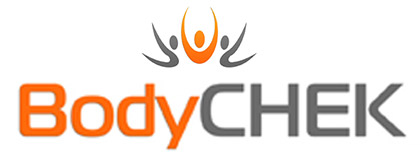In Parts 1 & 2, I discussed the six highest systems on The Reflex Survival Totem Pole (devised by Paul Chek). The six systems being breathing, the jaw, vision, vestibular, upper cervical spine and viscera.
After the Viscera comes Emotions. Emotions are unique on the Totem Pole because they can float up and down. You only have to think about feeling angry and the affect that has on your breathing to see how emotions can float to the top of Totem Pole.
Emotions and posture are intimately linked. A sad or depressed person is more likely to hold a rounded-shoulder, hunched-over, forward head posture. A confident, successful person will naturally hold an upright, shoulders back head-up posture.
If you don’t believe me, stand up straight, eyes looking straight ahead, shoulders back and smile. Hold the smile and see if you can feel sad. It’s impossible!
According to Traditional Chinese Medicine (TCM) emotions are processed in the body in different ways. There are healthy ways and unhealthy ways. When an injury occurs, there are quite often emotions attached, such as fear, frustration or anger. If these emotions aren’t processed properly they can be trapped in the body, not allowing the physical body to heal.
Think of it this way. All the cells of your body are regenerated every seven years. Every seven years you have a new body. So why do some people have injuries for longer than seven years? The body part that was injured no longer exists!?!?
After emotions is the Pelvic Girdle. The pelvic girdle includes the pelvic bones, the sacrum and coccyx. It is the foundation for the spine and has to transfer forces from lower body to the upper body as we move. If the pelvis is not in anatomical neutral it will greatly affect the position of the spine and the head. An inability to properly balance and stabilise the pelvis will also lead to problems below it on the Totem Pole.
The position of the pelvic girdle is greatly affected by everything above it on the Totem Pole. For instance, if there is an ASC, the spinal cord will be rotated, stretched and therefore under tension. To relieve the tension on the spinal cord, the pelvis will rotate in the same direction as the Atlas. As mentioned above, if there is a visceral problem, the pelvis may not be able to stabilise effectively and the pelvis is more likely to tilt anteriorly.
At the bottom of the Totem Pole is the Slave Joints. The slave joints are everything left in the body, i.e. spine below the upper cervical spine and the limbs. Interestingly, this is where most injuries tend to occur.
The reason why many other treatment modalities don’t always work is that they treat at this level, i.e. the bit that hurts.
However, consider this. What if someone came to me with a knee injury and lower back pain? On my assessment, it is clear that the client can’t stabilise their knee during movement. The question need to ask is WHY? On further investigation I note that their pelvis is twisted. I still need to ask WHY? The abdominals aren’t working as they should. The question is WHY?
The Reflex Survival Totem Pole allows me to keep asking questions until I find the cause or causes of the injury. In the 4th and final part, I shall put all the pieces of the jigsaw puzzle together and show you how it all works.
